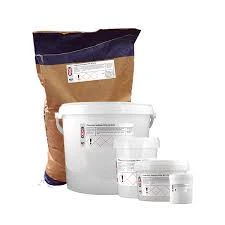
Understanding the Role of Acidity Regulator 270 in Food Products and Preservation
Understanding Acidity Regulator E270 A Comprehensive Overview
Acidity regulators play a crucial role in food preservation and flavor optimization, among other functions. Among the various acidity regulators, E270, commonly known as lactic acid, stands out as a versatile and widely used additive. Its natural occurrence, functional benefits, and safety profile make it an attractive choice for food manufacturers.
What is E270?
E270, or lactic acid, is an organic acid that naturally occurs in various foods, particularly in fermented products such as yogurt and sourdough bread. It is produced either through the fermentation of carbohydrates by lactic acid bacteria or synthesized through chemical processes. In both cases, it serves to regulate acidity in food products, enhancing taste and prolonging shelf life.
Functions of E270
The primary function of E270 as an acidity regulator is to lower the pH of food products. This pH reduction not only imparts a tangy flavor but also inhibits the growth of spoilage microorganisms and pathogens, increasing food safety. Additionally, lactic acid acts as a preservative, allowing for longer shelf life without compromising the quality of the food.
Beyond its role as a preservative and flavor enhancer, E270 also contributes to the overall texture and consistency of various foods. It can aid in the fermentation process by providing an ideal environment for beneficial bacteria to thrive. This is particularly important in the dairy industry, where lactic acid is integral to producing cheese and fermented dairy products.
Applications of E270
acidity regulator 270

Lactic acid is utilized across a wide range of food products. In dairy, it is essential for producing yogurt, cheese, and various types of cream. In baked goods, E270 helps enhance the flavor and shelf life while maintaining freshness. It is also commonly found in meat products, vegetable juices, and canned goods, serving as both a flavor enhancer and a preservative.
The beverage industry also employs lactic acid in soft drinks and fruit juices, where it provides a pleasant acidity that balances sweetness. Its presence is particularly beneficial in products designed for health-conscious consumers, as it can improve flavor without adding extra sweetness.
Safety and Regulatory Status
E270 is recognized as safe for consumption by various food safety authorities, including the European Food Safety Authority (EFSA) and the U.S. Food and Drug Administration (FDA). Its natural occurrence in many foods supports its safety profile, and when used within regulated limits, lactic acid does not pose health risks to consumers.
For those with dietary restrictions, it is crucial to note that lactic acid can be derived from both animal and plant sources. However, vegan and plant-based options are widely available, making it suitable for various dietary preferences. Always check product labels to ensure compliance with specific dietary requirements.
Conclusion
In conclusion, E270 or lactic acid is an essential acidity regulator that enhances the safety, flavor, and quality of a wide array of food products. Its natural origins and multifunctional properties make it a preferred choice within the food industry. As consumers become more aware of food additives, the transparency and safety of products containing E270 will remain critical. The continued use of E270 reflects evolving food technology, providing benefits not only to manufacturers but also to consumers seeking healthier and safer food options. Whether in yogurt, cheese, or a myriad of other products, lactic acid will undoubtedly continue to play a vital role in modern cuisine.
-
Understanding Synthetic Rubber OptionsNewsApr.27,2025
-
Trichloroisocyanuric Acid: Essential for Clean and Safe WaterNewsApr.27,2025
-
Sodium Dichloroisocyanurate: Key to Safe Water TreatmentNewsApr.27,2025
-
Sodium Acid Pyrophosphate: Essential in Modern Food ProcessingNewsApr.27,2025
-
Essential Water Treatment ChemicalsNewsApr.27,2025
-
Denatured Alcohol and Its Industrial UsesNewsApr.27,2025
-
The Versatile Uses of Sodium BicarbonateNewsApr.24,2025
Hebei Tenger Chemical Technology Co., Ltd. focuses on the chemical industry and is committed to the export service of chemical raw materials.
-

view more DiethanolisopropanolamineIn the ever-growing field of chemical solutions, diethanolisopropanolamine (DEIPA) stands out as a versatile and important compound. Due to its unique chemical structure and properties, DEIPA is of interest to various industries including construction, personal care, and agriculture. -

view more TriisopropanolamineTriisopropanolamine (TIPA) alkanol amine substance, is a kind of alcohol amine compound with amino and alcohol hydroxyl, and because of its molecules contains both amino and hydroxyl. -

view more Tetramethyl Thiuram DisulfideTetramethyl thiuram disulfide, also known as TMTD, is a white to light-yellow powder with a distinct sulfur-like odor. It is soluble in organic solvents such as benzene, acetone, and ethyl acetate, making it highly versatile for use in different formulations. TMTD is known for its excellent vulcanization acceleration properties, which makes it a key ingredient in the production of rubber products. Additionally, it acts as an effective fungicide and bactericide, making it valuable in agricultural applications. Its high purity and stability ensure consistent performance, making it a preferred choice for manufacturers across various industries.











